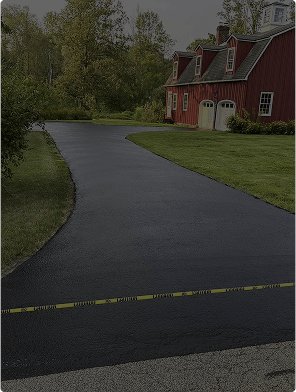Sealcoating a driveway is a smart way to protect your asphalt, prolong its life, and restore its look. But timing is everything. Go back on the surface too early, and you risk damaging the new coating. So what’s the safe waiting period? The answer is: it depends. Let’s explore the best practices, caveats, and guidelines to help you know when your driveway is ready for use.
Drying vs. Curing: What’s the Difference?
First, let’s try to understand the difference between drying and curing:
- Drying time is when the sealcoat feels dry at the surface, enough so it’s not tacky.
- Curing time is how long it takes for the sealcoat to fully harden and adhere optimally, including lower layers.
Even if the top surface appears dry, deeper layers may still be vulnerable. Driving on a sealcoated surface too early may leave tire marks, scuffs, or even pull up the coating.
How Soon Can You Use Your Driveway Again?
While exact times vary depending on various factors, you may follow this general guide to know when it’s safe to step or drive back on your freshly sealed surface. These timeframes represent typical conditions and may need adjustment based on weather or product recommendations:
* These are based on optimal conditions (sunny, warm, low humidity).
Key Factors That May Influence the Waiting Period
As many variables are involved, the waiting time can change. Here are some factors to consider:
- Weather & Temperature: Hot, dry, sunny weather speeds drying; cold or overcast conditions slow it down.
- Humidity: Higher humidity slows evaporation and delays full cure.
- Thickness of Application: A heavier application can take longer to set through all layers.
- Sealer Type & Additives: Some sealers are modified with fast-dry additives, which can accelerate drying times.
- Surface Conditions & Preparation: Well-prepared, clean, and dry asphalt will accept the coating more uniformly, reducing irregular delays.
- Early Traffic Patterns: Repeatedly parking in the same spot or turning wheels while stationary during early cure can be riskier.
What If You Drove Too Soon?
Expect temporary tire marks, scuffs, or light tracking. Often, these fade as the coating continues to cure, but repeated stress early on can shorten lifespan. Minimize damage by avoiding sharp, stationary turns and heavy point loads until the surface stiffens.
Here are some tips to help make the process smoother:
- Pick a 2–3 day stretch of dry, warm weather (no rain in the forecast).
- Seal only dry, clean asphalt. Make sure there’s no moisture underneath.
- Post clear signage or barricades.
- Limit turns in the first week. Drive in/out straight, no pivoting on the spot.
- Avoid fuel, oil, and strong detergents for at least 30 days after sealing.
Let’s Plan Your Sealcoating Project
At AMR, we understand that your pavement and surfaces are as important as any other part of your property. Whether it’s driveway sealcoating or ensuring safe, smooth access after maintenance, our attention to detail is consistent across services.
Want professional support or advice on protecting your newly sealed surfaces? Call us today at 888-959-9637 to schedule a consultation or maintenance check.
Additional Reads:
How Long Does Seal Coating Take to Dry?
Does Seal Coating Your Driveway Really Prolong Its Life?
